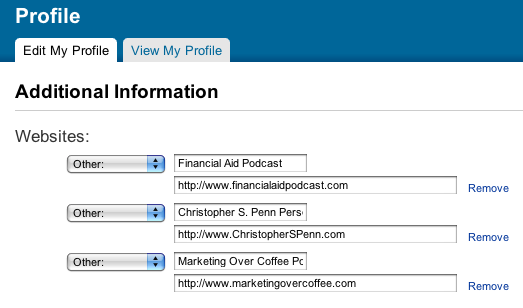I’ve been reading some very insightful comments about PodCamp Boston 3 over the past few days, and this one from Chris Cavallari really stuck out.
I especially liked this:
In my talks with other podcampers, one of the issues that came out of PCB3 was the desire to actually create something at Podcamp. At this point, many of us are veterans of podcamps and new/social media, and are looking to expand our horizons. The sessions, while mostly interesting and informative, are generally rehashes of things we’ve seen and done for several years now. Many of us want some kind of track where we can physically put the skills we’ve learned and honed to good use.
Here is the challenge that faces America right now – people are making hard choices between gasoline and food, between college and electricity, between losing their house and losing their life.
We can’t do much at a single PodCamp to influence global policy, not yet. We can attempt to keep the carbon footprint of PodCamp as small as possible, as PodCamp SA did. We can’t influence ExxonMobil or the other energy companies directly yet, though new media folks are starting to work their ways into the blue chips.
What can we do?
Two things are squeezing the average Joe right now – food and fuel.
Here’s the social media challenge for PodCamp Philly, appropriate for the city of Brotherly Love, Geno’s, Pat’s, and some of the worst poverty I’ve seen in an American city.
Let’s make a social media cookbook that we can complete and distribute by the time PodCamp Philly is over. The focus? Making food as affordable as possible.
I’m reminded to say that this is open to everyone, not just people attending PodCamp Philly.
What might this entail? Between now and the close of PodCamp Philly, find, create, revise, and publish recipes using the lowest cost foodstuffs available that still satisfy basic nutritional needs and don’t resemble gruel. Use social media and real life connections to talk to a grandparent that got by during the Depression. Find old wives’ recipes and dig up ideas from old church community books. Dig deep into your community and history to find the treasures hiding just out of sight, like how to make popcorn on a stovetop or jam from scratch. How to bake a loaf of bread yourself. How to make pasta or plant an herb garden.
Let’s unite all of our networks, all of our knowledge, and all of our generations we have access to. Let’s take this information, these recipes, and blog them, with instructions and cost breakdowns. Video them and publish the videos as tutorials. Record audio walkthroughs. Let’s rip a PDF of this that can be distributed to every soup kitchen and food pantry in America, something that they can then pass on to their customers. Let’s fire up iMovie and iDVD, Libsyn and Blubrry, and make some media worth distributing. Let’s grab Chef Mark Tafoya, Jennifer Iannolo, Nina Simonds, Kathy Maister, Ming Tsai, and ask the hell out of everyone doing a cooking show in new media to help us with this goal. Let’s get Second Harvest, United Way, and every corporation with some dollars to spare to get involved and sponsor this project.
Our goal? A social media collection detailing cheap, easy, healthy food so that a parent with 5 dollars in their pocket can do at least SOMETHING other than the dollar menu at a fast food chain.
Then, at PodCamp Philly, let’s put it all together. Let’s assemble it, put up the web site, search engine optimize it, use all of our social media powers to promote the hell out of it with every service we can get our hands on, and see just how far we can lob the thing into the air.
Are you game?
I’m reminded to say that this is open to everyone, not just people attending PodCamp Philly.
Did you enjoy this blog post? If so, please subscribe right now!
Get this and other great articles from the source at www.ChristopherSPenn.com







